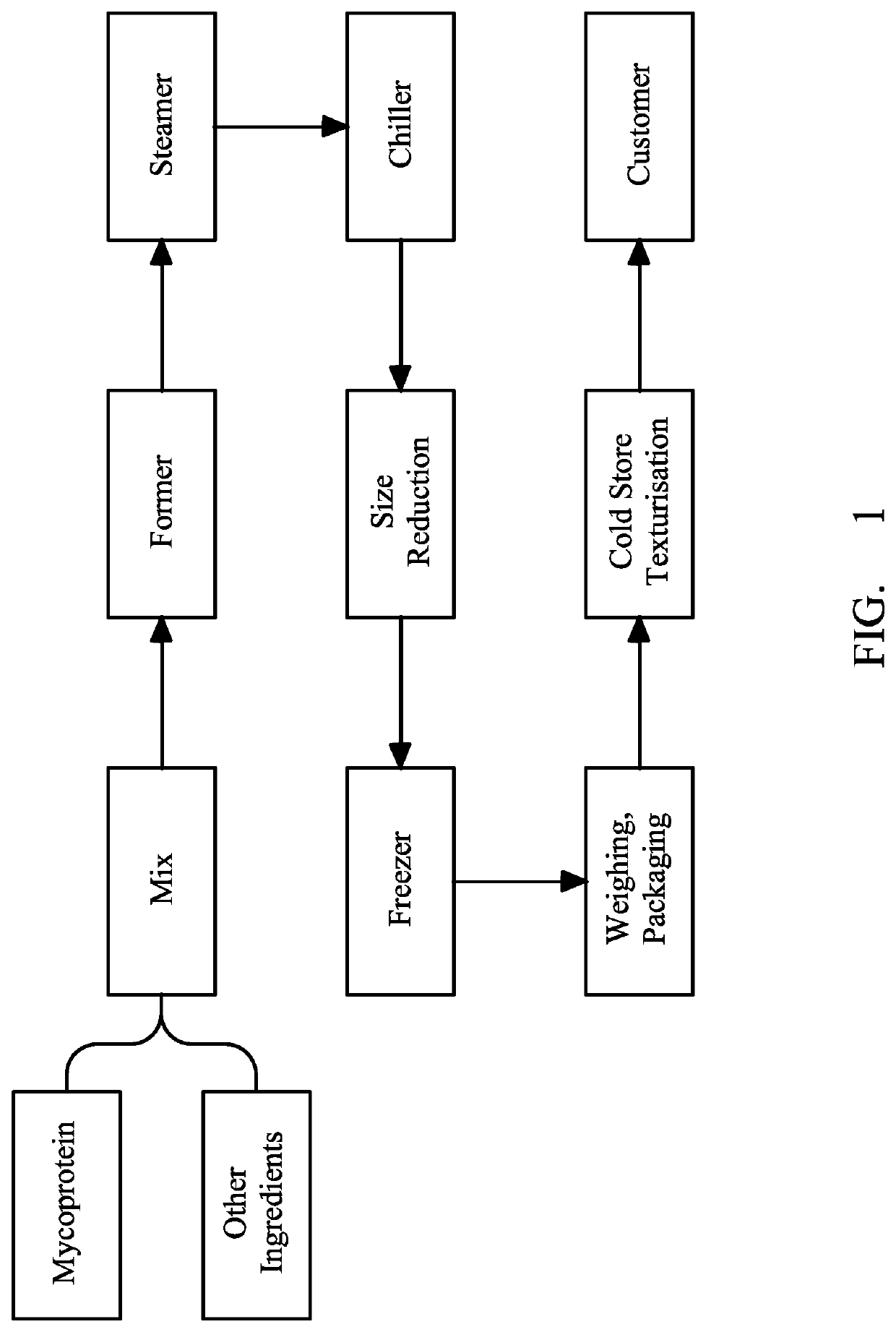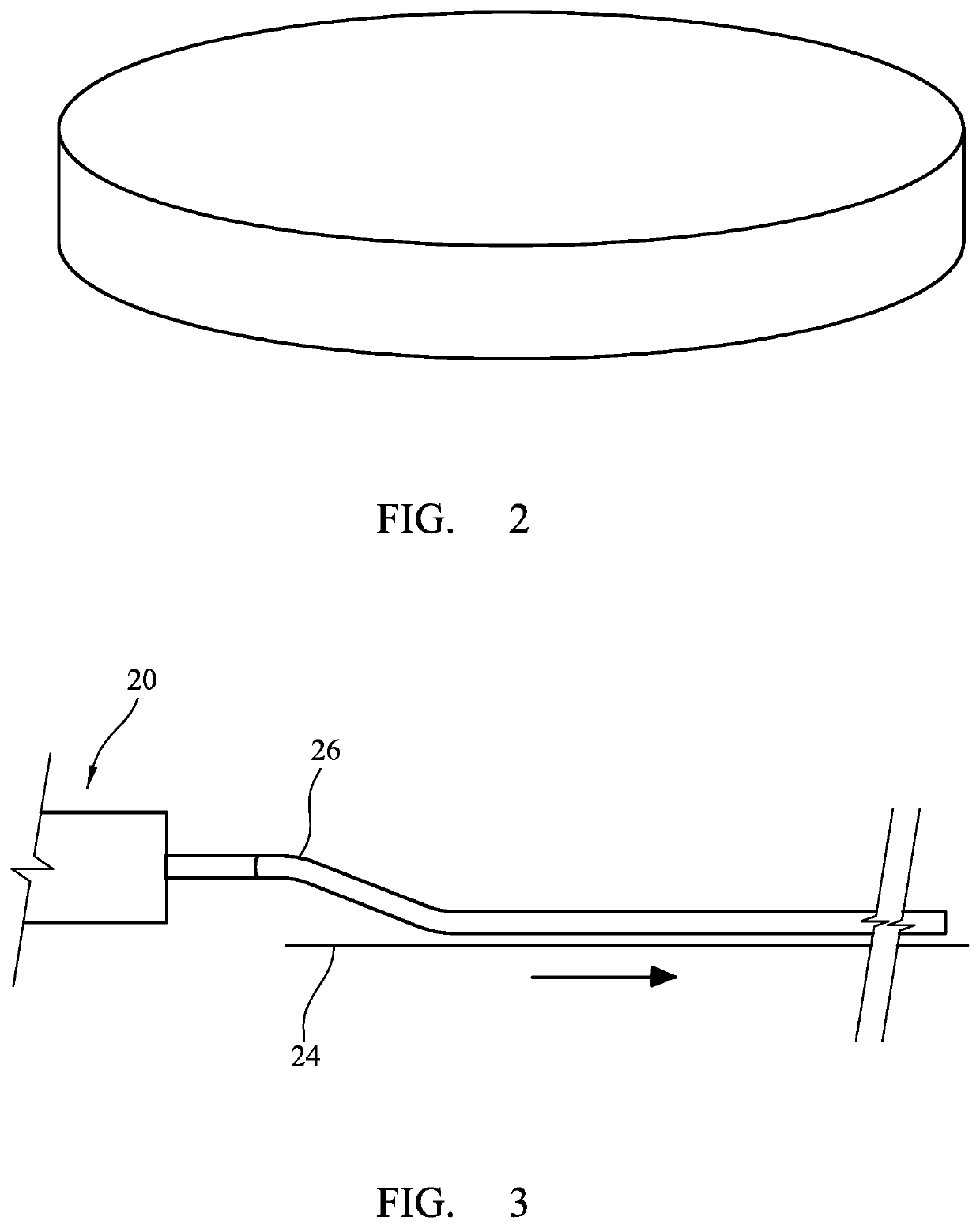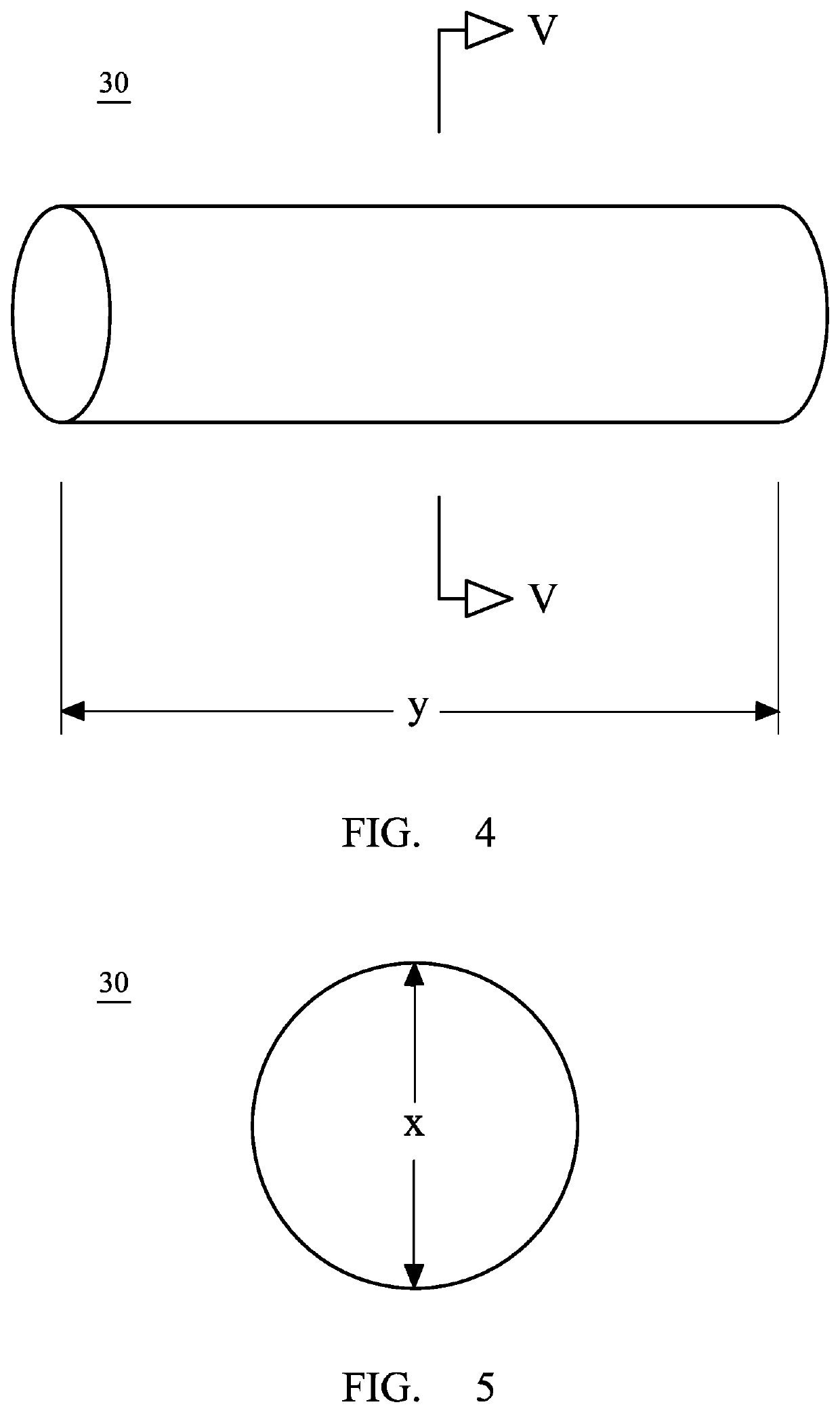Edible fungus
a technology of filamentous fungus and fungus, which is applied in the field of edible fungus, can solve the problems of less than optimal storage, adverse to production and eating quality, and difficulty in dispersing defrosted filamentous fungus into foodstuffs using industrial mixers, and achieve the effect of prolonging the maximum storage time of filamentous fungus and facilitating dispersal
- Summary
- Abstract
- Description
- Claims
- Application Information
AI Technical Summary
Benefits of technology
Problems solved by technology
Method used
Image
Examples
working examples
[0086]The following material is referred to hereinafter:
[0087]Mycoprotein paste—Mycoprotein paste-refers to a visco-elastic material comprising a mass of edible filamentous fungus derived from Fusarium venenatum A3 / 5 (formerly classified as Fusarium graminearum Schwabe) (IMI 145425; ATCC PTA-2684 deposited with the American type Culture Collection, 12301 Parklawn Drive, Rockville Md. 20852) and treated to reduce its RNA content to less than 2% by weight by heat treatment. Further details on the material are provided in WO96 / 21362 and WO95 / 23843. The material may be obtained from Marlow Foods Limited of Stokesley, U. K. It comprises about 23-25 wt % solids (the balance being water) made up of non-viable RNA reduced fungal hyphae of approximately 400-750 μm length, 3-5 μm in diameter and a branching frequency of 2-3 tips per hyphal length.
[0088]In the Examples which follow, Example 1 describes freezing of discs in a first freezing process; Example 2 includes an alternative freezing me...
example 1
of Mycoprotein Paste (First Freezing Process)
[0089]In the process, air blast freezing involves an air blast spiral freezer. In the process, a long, slow moving mesh belt passes through an enclosure containing very cold air in motion. The speed of the belt is variable according to the time necessary to freeze the product which for expediency is in the form of discs, as represented in FIG. 2, with a weight of 40 g after freezing of mycoprotein paste. The cold air is introduced into the tunnel at the opposite end from the one where the product to be frozen enters; that is, the air flow is counter to the direction of passage of the product. The temperature of the air used is −21° and the product is within the freezer for about 45 minutes. This is sufficient to freeze the core of the product to a temperature of at least −18° C.
[0090]After freezing, the frozen discs are packed into 20 kg boxes and moved into a standard commercial cold store held at −18° C. to −21° C.
[0091]The above proces...
example 2
of Mycoprotein Paste (Second Freezing Process)
[0092](a) Referring to FIG. 3, an extruder 20 for extruding mycoprotein via a circular cross-section nozzle is positioned adjacent a slow moving belt 24 of an air blast spiral freezer, identical to the freezer referred to in Example 1. Extrudate 26 (which is rope-like) passes from the nozzle and contacts the belt 24 which conveys it through the freezer. The temperature of the air in the freezer is at −21° C. and each part of the rope-like extrudate 26 has a residence time in the freezer of about 11 minutes. This is found to be sufficient to freeze the core of the rope to at least −18° C., as monitored by a suitably positioned temperature probe.
[0093]On exiting the freezer, the rope-like extrudate 26 falls into a receptacle (not shown). Since at this stage the extrudate is brittle, it shatters on contact with the receptacle to form short pieces of frozen mycoprotein paste as represented in FIGS. 4 and 5. Referring to the figures, a rod 30...
PUM
| Property | Measurement | Unit |
|---|---|---|
| cross-sectional area | aaaaa | aaaaa |
| wt % | aaaaa | aaaaa |
| weight | aaaaa | aaaaa |
Abstract
Description
Claims
Application Information
 Login to View More
Login to View More - R&D
- Intellectual Property
- Life Sciences
- Materials
- Tech Scout
- Unparalleled Data Quality
- Higher Quality Content
- 60% Fewer Hallucinations
Browse by: Latest US Patents, China's latest patents, Technical Efficacy Thesaurus, Application Domain, Technology Topic, Popular Technical Reports.
© 2025 PatSnap. All rights reserved.Legal|Privacy policy|Modern Slavery Act Transparency Statement|Sitemap|About US| Contact US: help@patsnap.com



